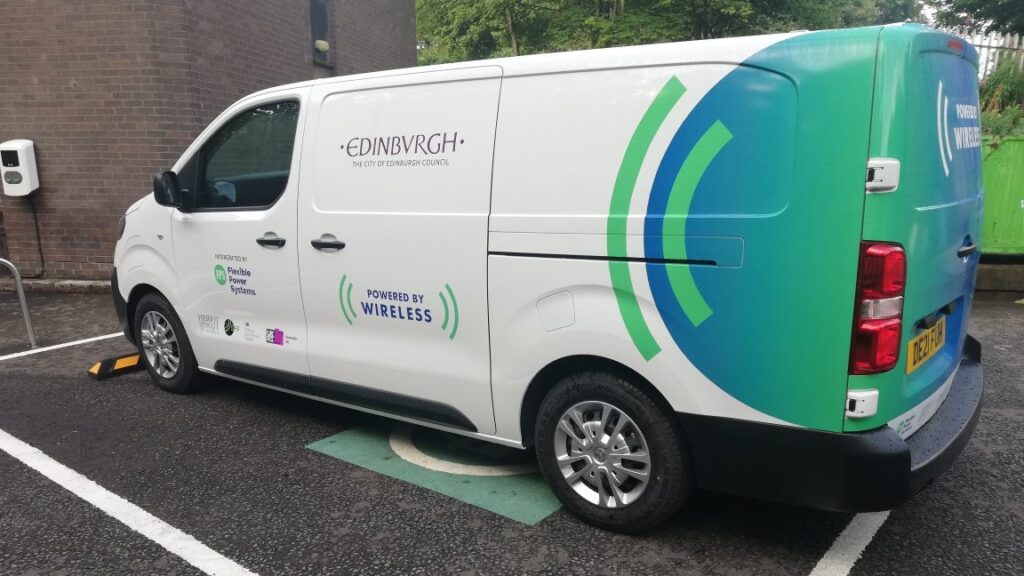
One year on, the world’s first real-world trial of wireless electric vans is now part and parcel of everyday operations at Heriot-Watt University in Edinburgh with an expansion to a second site operated by the John Lewis Partnership.
The project also delivered a range of software tools to support fleets and policy makers on the journey to electrifying fleets.
The £1.6 million project was led by EV technology company Flexible Power Systems, (FPS), in partnership with the university, the City of Edinburgh Council and John Lewis Partnership.
‘We have learnt a lot about the practicalities of integrating wireless electric vehicle charging into commercial vehicle fleets alongside wired technologies,” said FPS Managing Director Michael Ayres.
‘Data collected from the trial informs our FPS Plan vehicle and infrastructure simulation software, and a cloud based smart vehicle and charger management system designed for home delivery forms the basis of our FPS Operate platform.’
Wireless wonder
Wireless vans are fitted with a slim charging pad on the underside and simply top up by parking above an electric plate, exactly like flat charging plates for mobile phones. They can also be plugged in to charge overnight.
The trial proved that wireless charging can be retrofitted to light commercial vehicles, using a conversion system developed for the trial. As wireless charging costs fall with volume, retrofit will be an important pathway for commercial vehicles operating in space constrained environments.
Shared charging
Modelling in the trial undertaken by FPS and Heriot Watt investigated the importance of shared charging infrastructure and found that it could reduce implementation costs for certain types of operation through reductions in depot electrification spend and smaller battery packs.
‘Interestingly, we also saw a shift in perspective over time. At project launch operators saw little value in the idea of shared charging infrastructure, as EV transitions were uncertain. Later, as more fleets switched and as the limitations of the public network became clear, we saw renewed interest in the concept, and growing operator interest in HGV charging hubs as a facilitator for electrification,’ Michael added.
Agent based modelling undertaken by Heriot Watt explored the role that charging hubs could play with conventional and autonomous vehicle fleets.
Dr Phil Greening, Deputy Director of the Centre for Sustainable Road Freight, and professor at Heriot Watt University, said:
Charging hubs offer the opportunity to spread the cost of charging infrastructure across multiple operators and at the same time provide facilities for faster last mile delivery service. This combination of benefits makes charging hubs a more attractive investment and could accelerate the transitions to net zero.
EV fleet planning and management software
FPS developed software tools for planning and managing the project. These were demonstrated on the Waitrose and John Lewis Fleets and are now being applied to fleets from the retail and rail sectors.
‘Linking planning, deployment and operations management phases together allows capital cost savings identified from simulation to be realised in an operational environment reducing upfront investment costs by millions for large fleets,’ said Michael.
What next for the site
The Heriot-Watt site is being maintained as a test bed site for the future green technologies. St Katharine Docks remains the principal test and learn site for the John Lewis Partnership. And software tools developed during the last year are now being used to reduce risks and costs for other fleets.
‘The trial was funded by the UK Government’s Office for Zero Emission Vehicles (OZEV) delivered in partnership with Innovate UK, to whom we are very grateful’, Michael added.
‘We’d also like to thank our partners Heriot-Watt University and The City of Edinburgh Council.’
